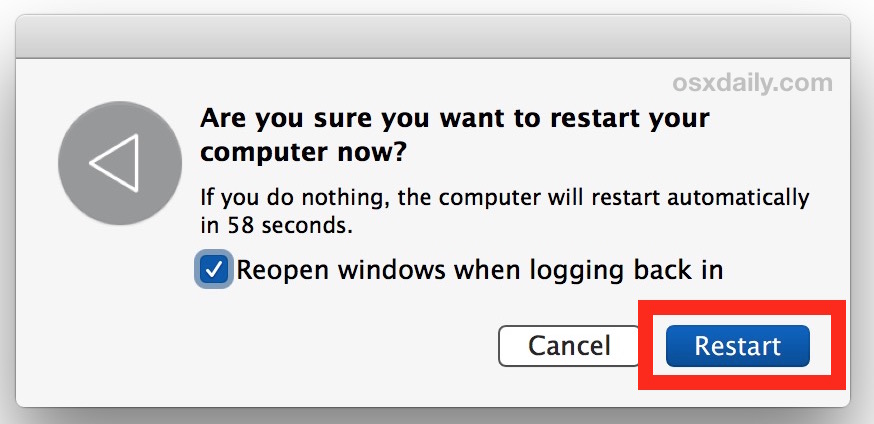

- #How do you restart your mac for windows how to
- #How do you restart your mac for windows mac osx
- #How do you restart your mac for windows install
Click About This Mac and then, Software Update. To check for macOS updates, go to the Apple menu.
#How do you restart your mac for windows install
Luckily, this is easy to fix - simply install all available updates your Mac is compatible with. Missed macOS updates and update issues can confuse your Mac, leading it to repeatedly restart (among other issues).
#How do you restart your mac for windows how to
Here’s how to fix the possible causes of your Mac restarting: macOS problems

Your Mac may also restart because of issues with its operating system. Kernel panic may result from faulty or problematic software, peripheral devices, or hardware settings. You’ll know that this has occurred when your Mac shows you a message that “Your computer restarted because of a problem.” The most common cause of a Mac continually restarting is called “kernel panic.” This occurs when your Mac’s kernel, or operating system, detects an issue that can be fixed by restarting your computer. There are a few reasons why your Mac might repeatedly restart. In this article, we’ll go over ways to identify why your Mac keeps restarting - and, even better, how to fix it.

Should removing these files and running the program does not resolve the issue, you might need to remove all of them and reinstall the program.Mac Help Desk Troubleshooting What to do when your Mac keeps restarting?Ī Mac that restarts unexpectedly is frustrating. One can get the user ID by typing "whoami" at a Terminal prompt.

Where is replaced with the person's user ID. Do so in the Terminal application by running the following command: You need to stop the CFPREFSD process for the current user. When you go to Finder - Applications - Utilities and open Activity Monitor on the 10.9.x computer you see that there is a CFPREFSD process visible for root user and for the current logged in user. Only by stopping the "cfprefsd" process and starting SPSS Statistics, will it generate a new "plist" preference file and default toolbar. Rather, Mavericks restore its cached copy. Since OSX 10.9.x Mavericks a cached copy of your "plist" file is stored that uses a background process: CFPREFSDĭeleting the "plist" file and restarting SPSS Statistics does not create a new copy of these files.
#How do you restart your mac for windows mac osx
FYI: Additionally, if you are using Mac OSX Mavericks 10.9.x, you need to stop the process that protects this file and restores it (it is deleted): This is related to Java initialization routines. NOTE: When you launch Statistics for the first time, it will take a little longer than subsequent launches, until you reboot your computer again. (14) Close the software (do not force quit) (11) Close the software (It should be quicker, do not force quit) Rm -fR ~/Library/Preferences/įinish and test your changes by doing the following: Another option is to use the Terminal application and do the following: The list of menu options will now include 'Library'. (4) Select the 'Go' menu at top of screen. (3) Select the 'Home' (house) icon (folder) in the left-hand pane. You can delete it by opening the Finder and locate the Library/Preferences folder: /Library/Preferences/ Delete the following file: on your Macintosh to dramatically reduce the opening and closing of the Statistics software.


 0 kommentar(er)
0 kommentar(er)
